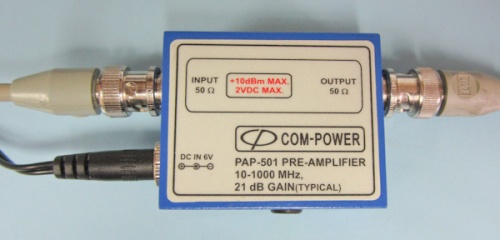Sorry about getting a little behind in postings. Here are some of the highlights of postings on the EDN.com site:
Review: inexpensive RF generator – During one of my presentations on low-cost EMC troubleshooting tools at the IEEE EMC Symposium last August, one of the attendees, Doug Miller, mentioned a small PC-controllable RF generator for just $190. Of course, I had to buy one and try it out!

Review: Windfreak Technologies SynthNV RF generator – Every once in a while, I discover a product that is so incredible I wonder why it hasn’t been publicized more widely. This is the case with Windfreak Technologies $599 miniature RF generator, the model “SynthNV” (Figure 1). In case you’re wondering, their company is named after the owner’s sailboat!

Detecting ESD Events – In my experience, electrostatic discharge (ESD) issues have now become the second-most prevalent issue other than radiated emissions. If you find your product has exhibits random upsets, such as loss of data or unusual circuit resets, it could very well be caused by ESD. This article describes several methods to detect these events.

Harmonic Analyzer Tool – Because of their typically fast edge rates, crystal oscillators can generate a large number of high-order harmonics. This harmonic analyzer was created by my coauthor, Patrick André, with additional formatting tweaks by myself. I find this really handy to calculate harmonics from clock oscillators.
Review: TTi PSA2702T handheld spectrum analyzer – One thing that I find handy is a small hand held spectrum analyzer for use in troubleshooting EMI issues. As I travel a lot in my job, I like to take the minimum amount of test equipment possible. Unfortunately, most good quality analyzers are large, heavy and expensive. About ten years ago, I ran into the Thurlby Thandar Instruments (TTi) PSA2701T and have used it extensively since then. During that time, I reviewed it several times. In May 2013, TTi completely redesigned and repackaged this analyzer and released it as the PSA2702T. This is a review of the new PSA2702T, which I have used for several months now.
















 Figure 1 – Photo showing the analyzer with supplied USB extension cable and 30 dB attenuator.
Figure 1 – Photo showing the analyzer with supplied USB extension cable and 30 dB attenuator.

